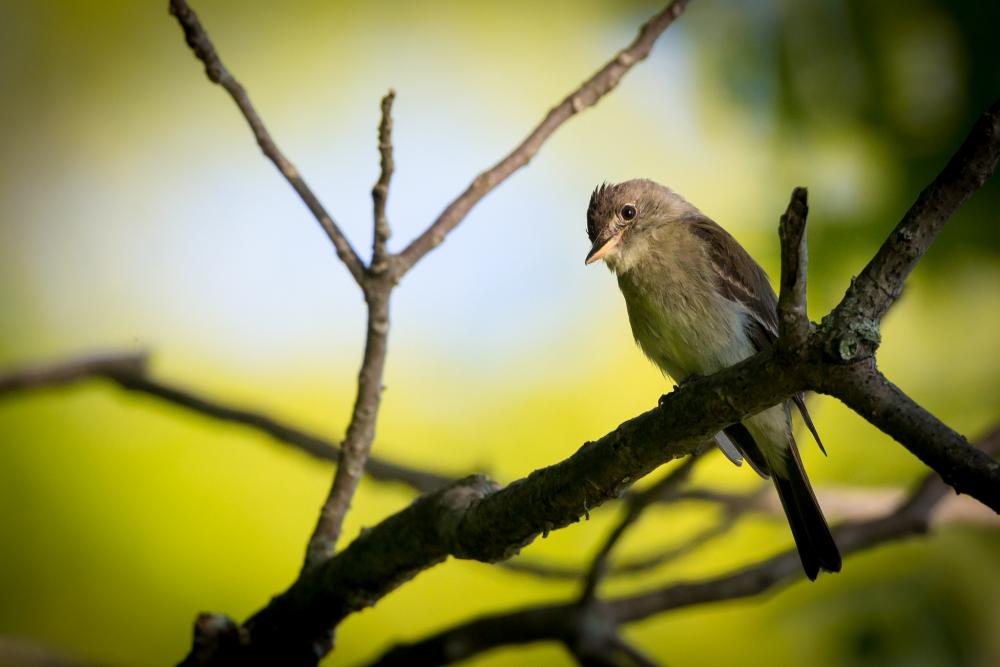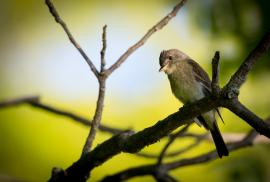Guide to Boreal Birds
Overview
Eastern Wood-Pewees are more often heard than seen because of their dull coloration and because they frequent the dense upper canopy of the forest.
Description
6 1/2" (17 cm). A sparrow-sized flycatcher, dull olive-gray above, slightly paler below, with 2 whitish wing bars. Western Wood-Pewee (Contopus sordidulus) of western United States extremely similar, but generally darker below; the two species are best distinguished by voice. Empidonax flycatchers are smaller and usually have noticeable eye ring.
Voice
A plaintive pee-ah-weee or pee-weee, falling in pitch on last note.
Nesting
3 or 4 creamy-white, brown-dotted eggs in finely woven, cup-shaped nest made of vegetable fiber and covered with lichens, saddled to a horizontal limb and blending in with the branch.
Habitat
Forests, open woodlands, orchards, and shade trees in parks and along roadsides.
Range/Migration
One of the last of the migrants to return in spring, the Eastern Wood-Pewee doesn't appear in northern forests until there are plenty of flying insects. Small numbers of this species cross the Gulf of Mexico, while the majority of individuals move up the Gulf lowlands then fan out and move through the eastern states on a broad front. This species is declining due to loss of wintering habitat in South America as well as breeding habitat in the United States. Eastern Wood-Pewees prefer forests with dense understory growth. Studies have shown that their decline in this country may be a result of destructive browsing by White-tailed Deer, whose populations are exploding in the upper Midwest and northeastern states.
Breeds from south-central and southeastern Canada to Gulf Coast and central Florida. Winters in tropics.



